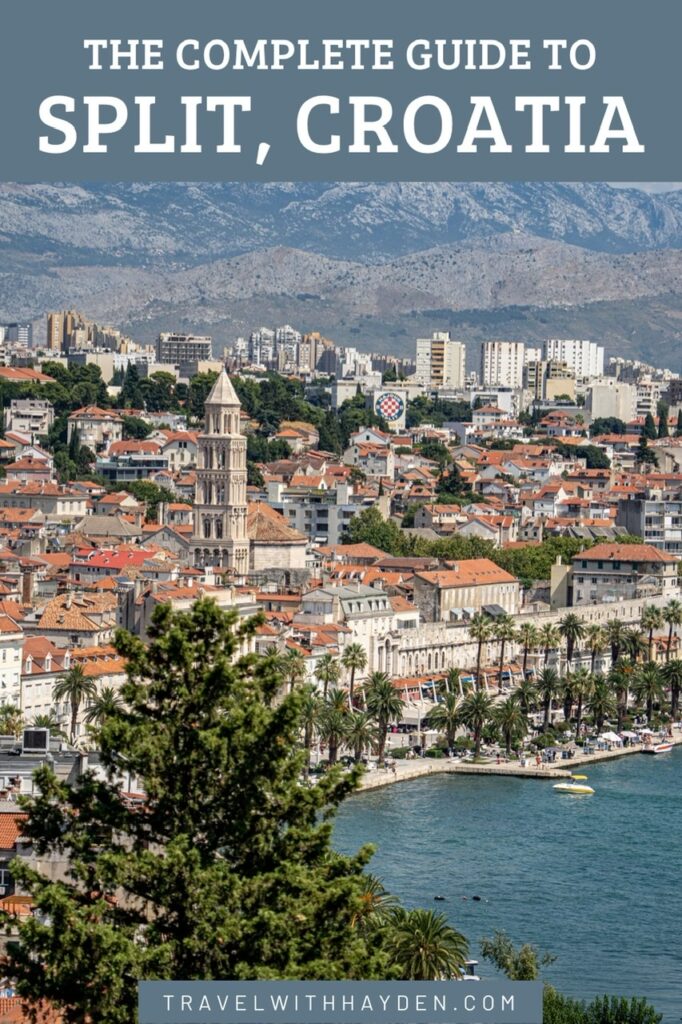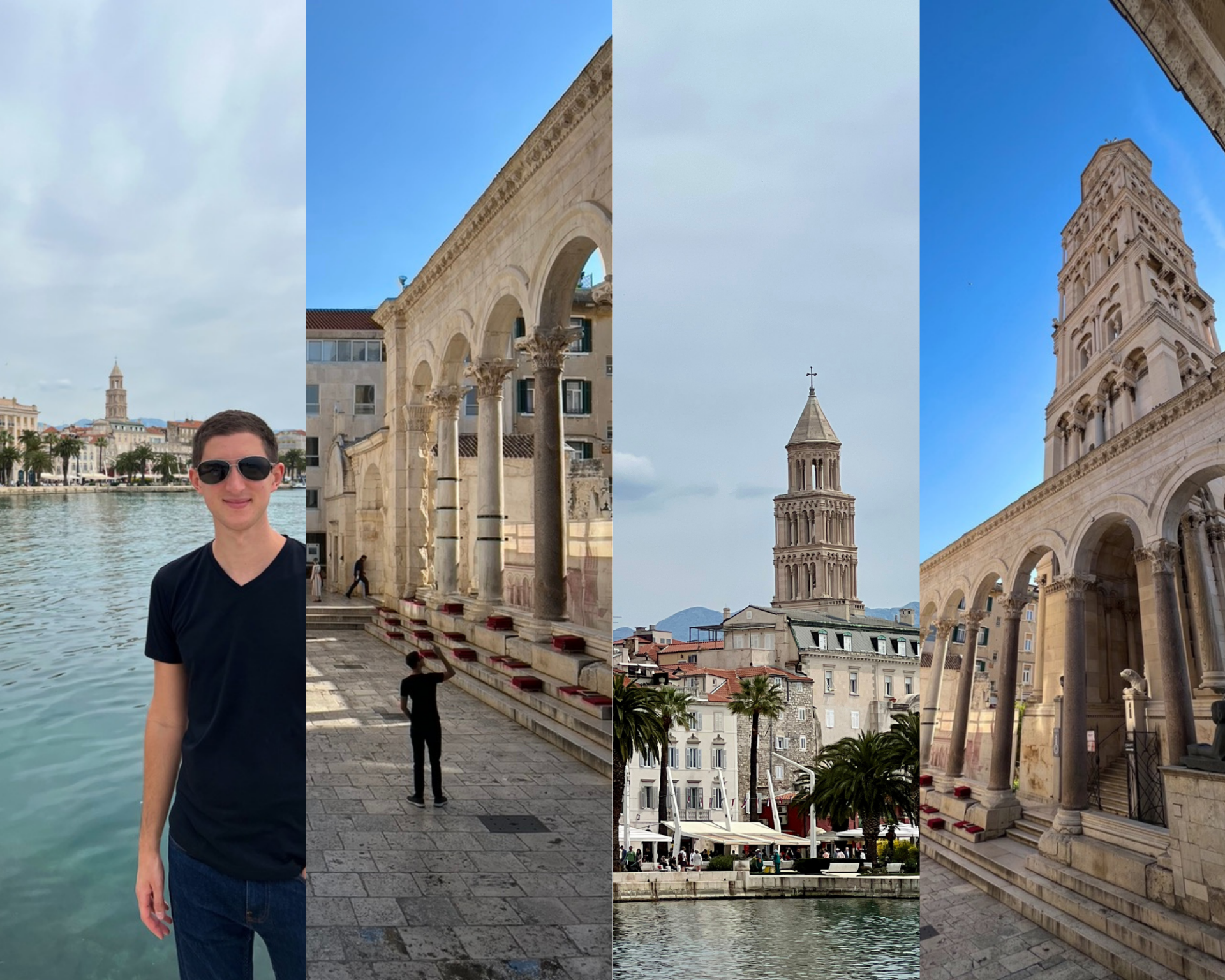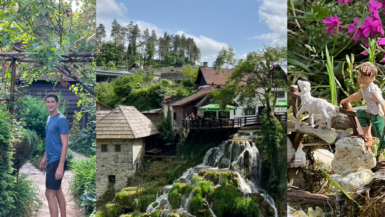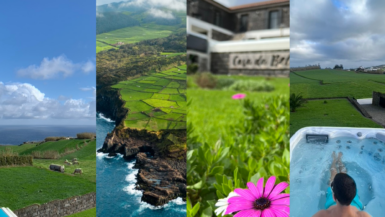Nestled along Croatia’s stunning Adriatic coast, Split is the heart of the Dalmatian region and a captivating mix of ancient history and vibrant modern life. Famous for its waterfront promenade, azure waters, and sun-soaked Mediterranean climate, this coastal city offers something for everyone. Whether you’re here to explore the historic Diocletian’s Palace, soak up the lively atmosphere of the local markets, or relax on one of the nearby beaches, Split is a must-visit destination. In this comprehensive guide, I’ll cover the best things to see and do, top places to stay, how to get around, and essential travel tips for your visit to Split, Croatia.
Find a great hotel stay in Split, Croatia on Trip.com here!
Table of Contents
Split, Croatia Complete Travel Guide
Why Visit Split?
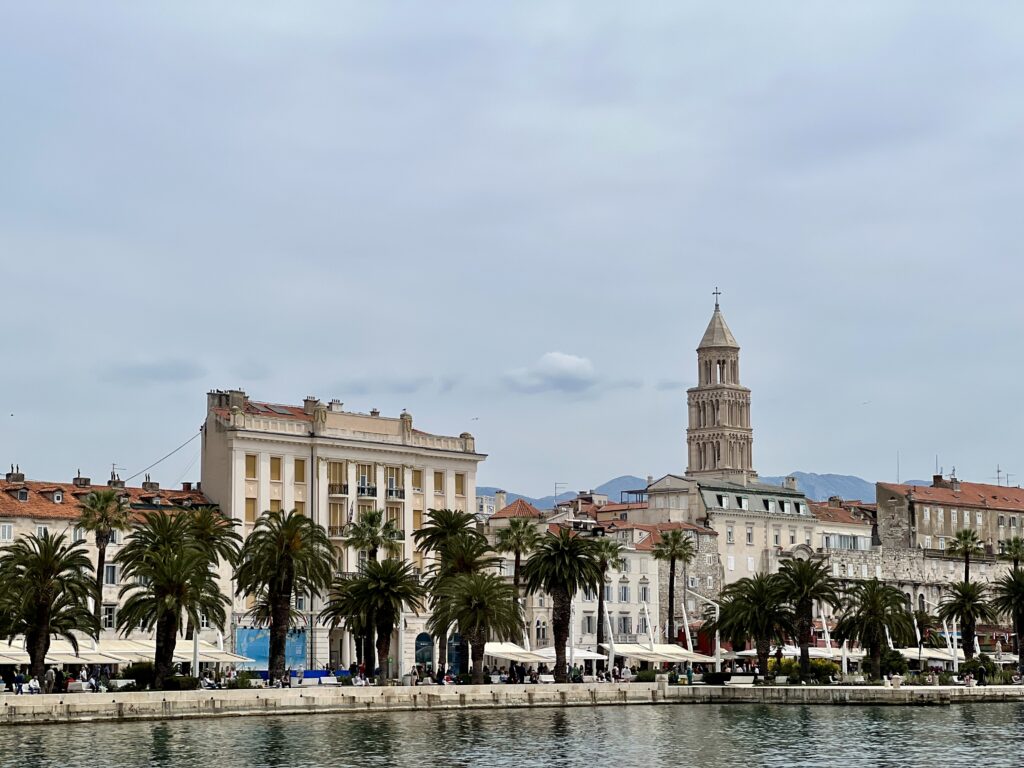
Split is a city where ancient history meets modern Mediterranean life. With over 1,700 years of history, it combines Roman architecture with a lively atmosphere. You’ll find historical landmarks like Diocletian’s Palace and the old city gates, all offering a glimpse into the past. At the same time, the waterfront is full of markets, shops, and busy cafes.
Whether you want to explore Diocletian’s Palace or relax by the sea with fresh seafood, Split has something for everyone. Its mix of history and seaside beauty makes it an ideal destination. Split perfectly balances the old and new, making it a must-visit in Croatia.
Best Things to Do in Split, Croatia
1. Visit Diocletian’s Palace & Cellars
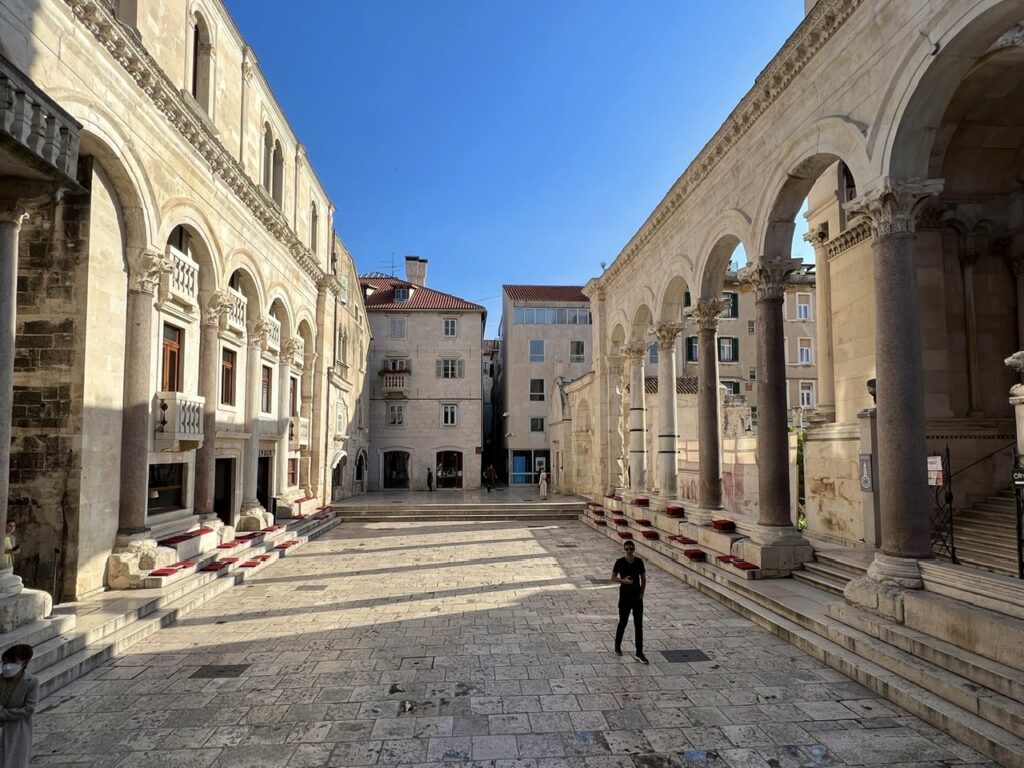
Diocletian’s Palace is a must-see when visiting Split, and one of the most significant historical landmarks in Croatia. Built in the 4th century by Roman Emperor Diocletian as his retirement residence, the palace evolved into an essential political and military hub, remaining so for centuries.
Today, it is a UNESCO World Heritage Site that offers a look into its well-preserved Roman architecture, along with later medieval additions. Despite changes, much of the original design remains intact. This makes it a fascinating place for both history enthusiasts and casual visitors. Walking through the palace feels like stepping back in time. The ancient walls, underground cellars, and grand courtyards reveal layers of Croatia’s deep history.
While sections of the palace are free to wander, certain areas require a ticket, which can be purchased near the main square or online. For the best experience, consider arriving early or joining a guided tour to enhance your understanding of this historical treasure.
Tips for Visiting Diocletian’s Palace:
- Buy tickets ahead of time to avoid waiting in line at the entrance.
- Consider a guided tour for a deeper understanding of the palace’s rich history and significance.
- Arrive early in the morning to explore without large crowds, particularly during peak tourist season.
- Be sure to visit the underground cellars, a fascinating part of the palace.
- Don’t miss the Peristyle Square, where you can witness live performances and local traditions.
- Allocate at least two hours to explore the palace grounds thoroughly.
2. Stroll the Riva, or Waterfront Promenade
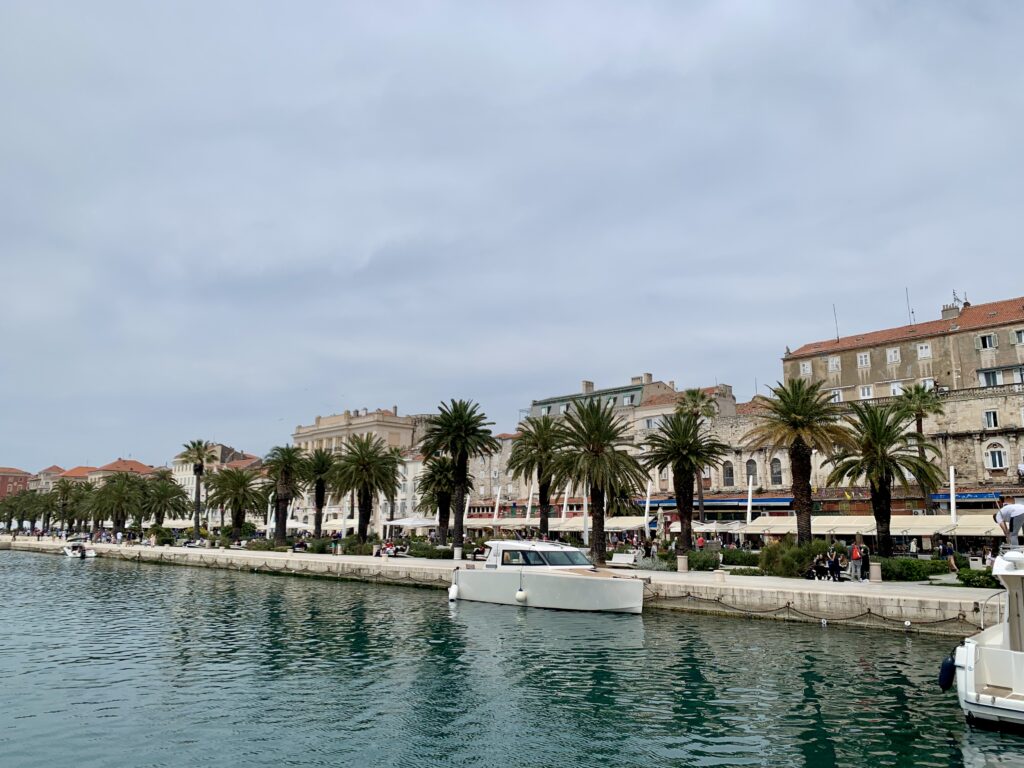
Riva, the waterfront promenade in Split, is a vibrant hub lined with upscale restaurants, shops, and cafes, making it a favorite spot for both locals and tourists. It’s the ideal place to relax with a meal or drink while soaking in the breathtaking views of the Adriatic Sea.
The promenade is beautifully adorned with small gardens, and luxury yachts are often docked nearby, adding to its charm. While prices here are higher, you’re paying for the unbeatable ambiance. In the evenings, Riva comes alive with people strolling, chatting, and enjoying the refreshing sea breeze, offering a true taste of Croatian Mediterranean life.
3. Climb to the Top of the Bell Tower
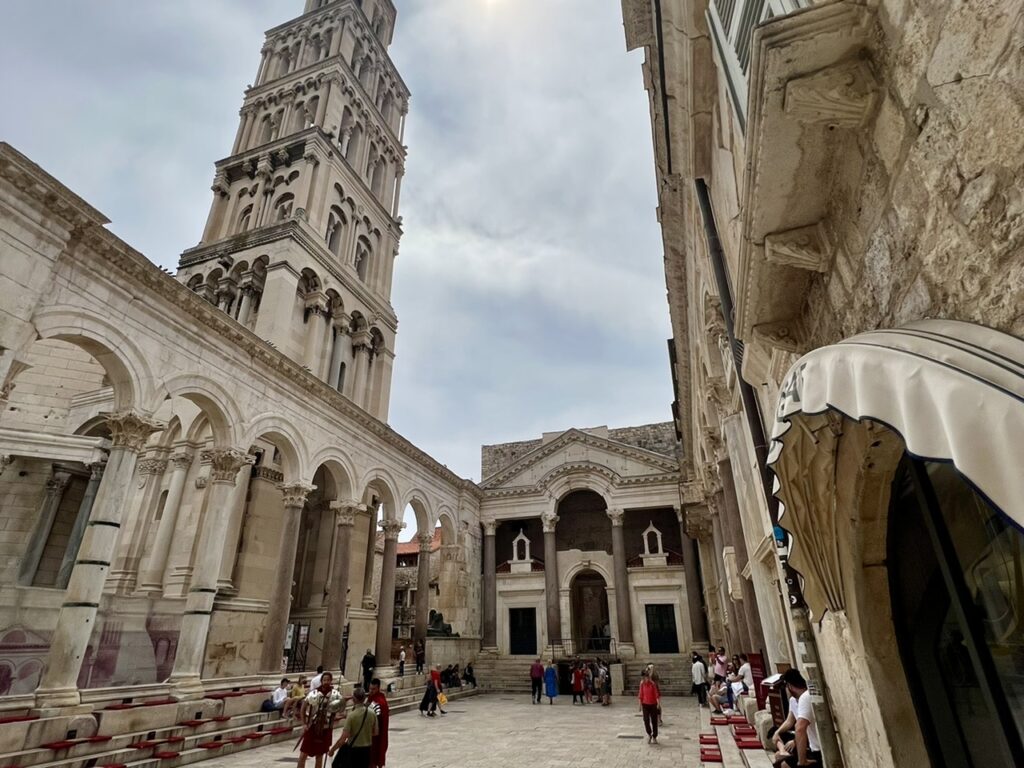
Climbing to the top of Saint Dominus Bell Tower is a must for any visitor to Split. Located within the Cathedral of Saint Domnius, the oldest Catholic cathedral still in use, this tower has stood since 1169, making it a remarkable piece of history. At nearly 80 meters (262 feet) tall, it offers one of the best vantage points in the city.
Though the climb to the top involves ascending 103 stairs, the reward is a breathtaking panoramic view of Split’s Old Town, the shimmering Adriatic Sea, and the distant mountains. This experience perfectly blends history and beauty, making it one of the top activities in Split.
Tips for Climbing Saint Dominus Bell Tower:
- Buy tickets early as they can sell out during peak times.
- Visit in the morning or late afternoon to avoid crowds and the midday heat.
- Take your time climbing, especially if you’re not used to heights.
- Be cautious at the top, as the space is tight, and the wind can be strong.
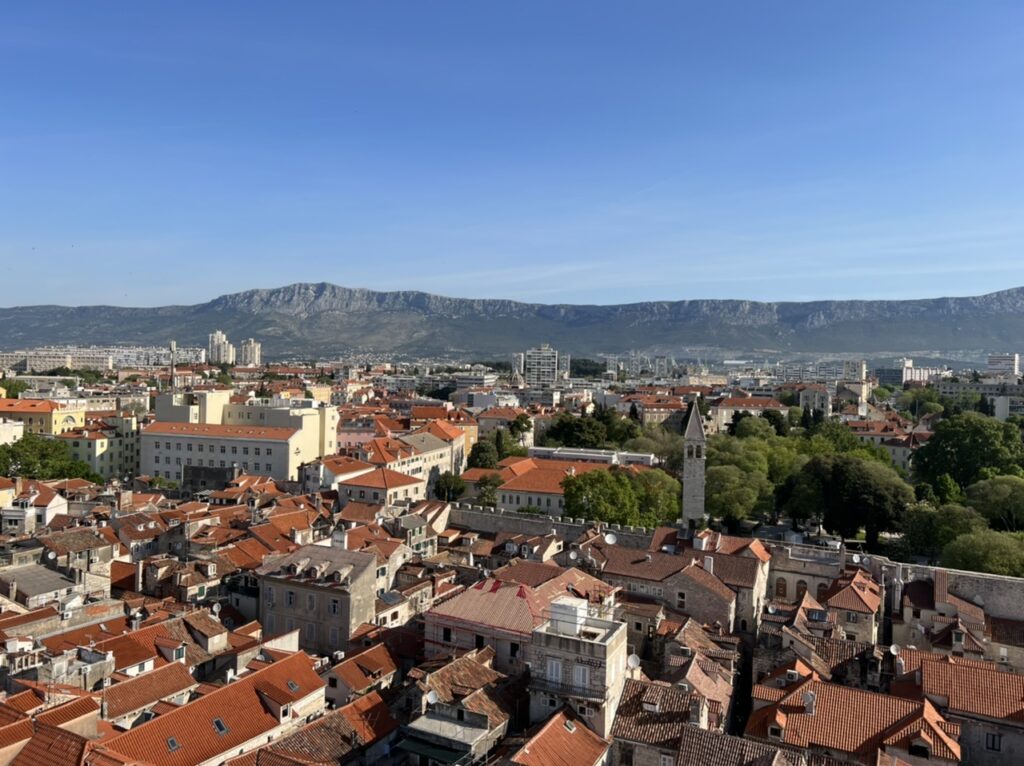
4. Hike up to Marjan Viewpoint for Fantastic Views of Split
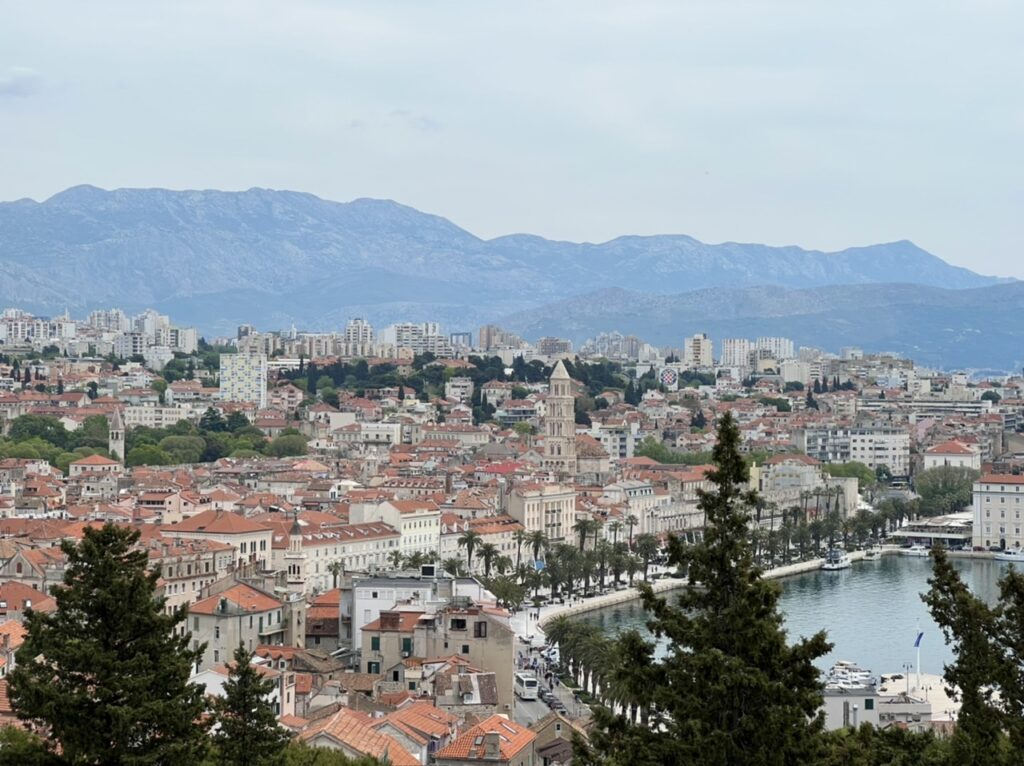
Marjan Viewpoint is a must-see spot in Split, offering breathtaking panoramic views of the city and the Adriatic Sea from the top of Marjan Hill. Reaching the viewpoint involves a short hike up more than 300 steps, but the journey is well worth it.
Once at the top, you’re greeted with stunning vistas that make the climb rewarding. There’s even a charming cafe where you can enjoy a coffee or beer while taking in the sights.
Beyond the viewpoint, Marjan Park offers plenty to explore with its scenic hiking trails, picnic areas, and playgrounds, making it a perfect spot for both relaxation and adventure.
5. Visit Klis Fortress
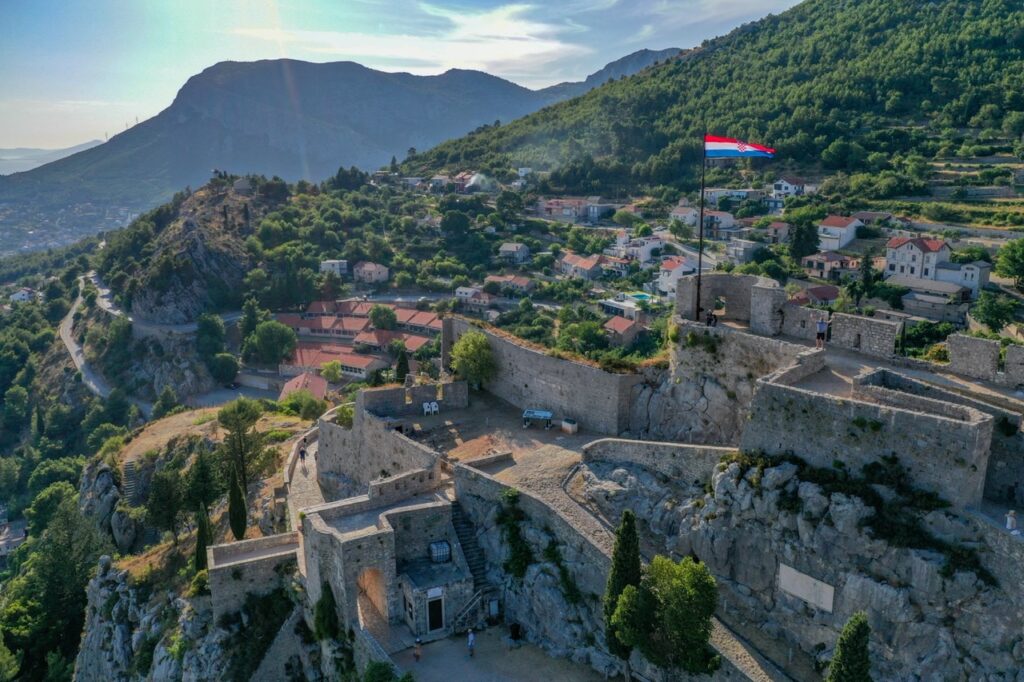
Klis Fortress, located just 10 kilometers from Split, is a fascinating medieval stronghold with a rich history dating back to the 11th century. It played a crucial role in defending the region, particularly during the Ottoman invasions of the 16th century, when it successfully repelled multiple attacks.
Today, the fortress is a popular destination for those interested in history and architecture. Visitors can wander through its well-preserved grounds, explore the on-site museum, and take in the stunning views of the surrounding countryside.
With its strategic location overlooking Split, Klis Fortress is an easy and rewarding day trip for anyone visiting the city, offering both historical insight and breathtaking scenery.
Tips for Visiting Klis Fortress:
- Visit early or late in the day to avoid crowds and the midday heat.
- Bring water, as the fortress is exposed, and there are limited facilities nearby.
- A guided tour can provide more in-depth information about the fortress’s rich history.
- Combine your trip with a visit to nearby Game of Thrones filming locations if you’re a fan of the show.
Additional Things to See and Do in Split
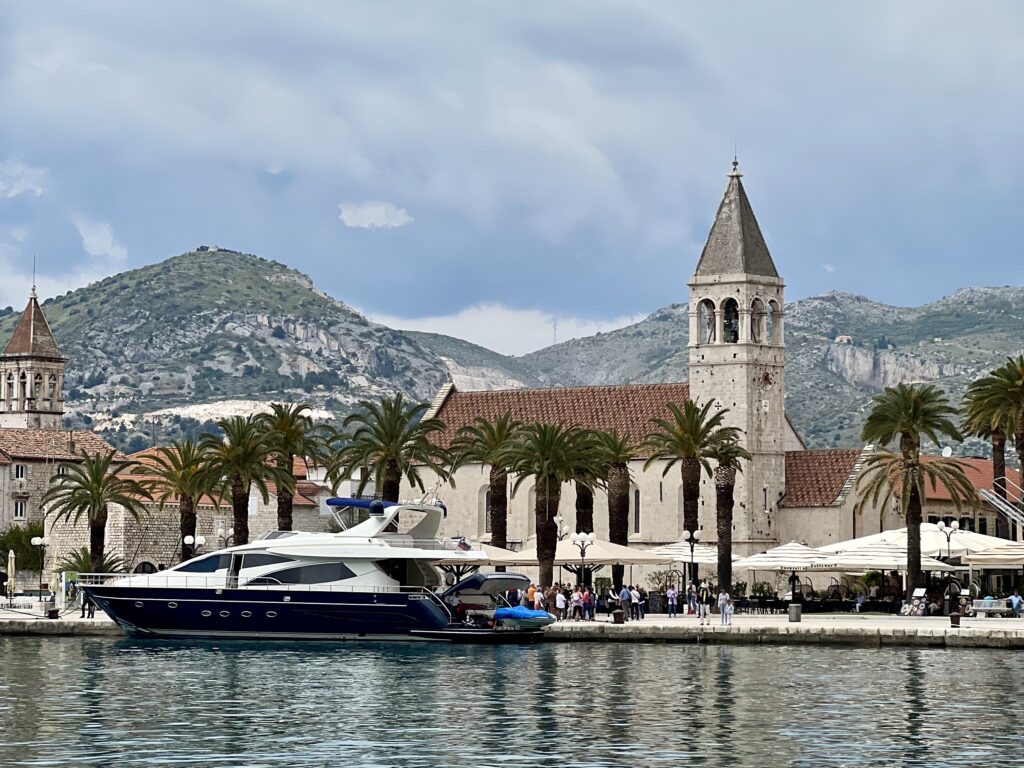
If you have extra time during your visit to Split, there are plenty of additional sights and activities worth exploring. From historical landmarks to nearby towns, these experiences will enrich your time in the city and offer a deeper look into Split’s culture and surroundings. Whether you’re a history enthusiast or just looking to soak up more of the local atmosphere, here are a few more things to see and do.
- Trogir: A charming town located just a short drive from Split, offering beautiful medieval architecture and seaside views. I spent a month living in Trogir and can say it is definitely worth visiting.
- Golden Gate: One of the main entrances to Diocletian’s Palace, this impressive gate is steeped in history.
- Gregory of Nin Statue: Rub the toe of this giant statue for good luck while admiring its grand presence near the Golden Gate.
- Stroll the Streets of the Old Town: Get lost in the winding streets of Split’s historic center, full of local shops, cafes, and hidden gems.
- Visit Bacvice Beach: A popular spot for locals and tourists alike, perfect for swimming or playing the traditional ball game, picigin.
- Archaeological Museum: For history buffs, this museum offers fascinating exhibits on ancient Split and Croatia.
- Split Fish Market: A lively spot where you can witness locals buying fresh seafood, giving you a taste of the city’s daily life.
Learn more about Trogir, Croatia with my complete travel guide!
Where to Stay in Split, Croatia
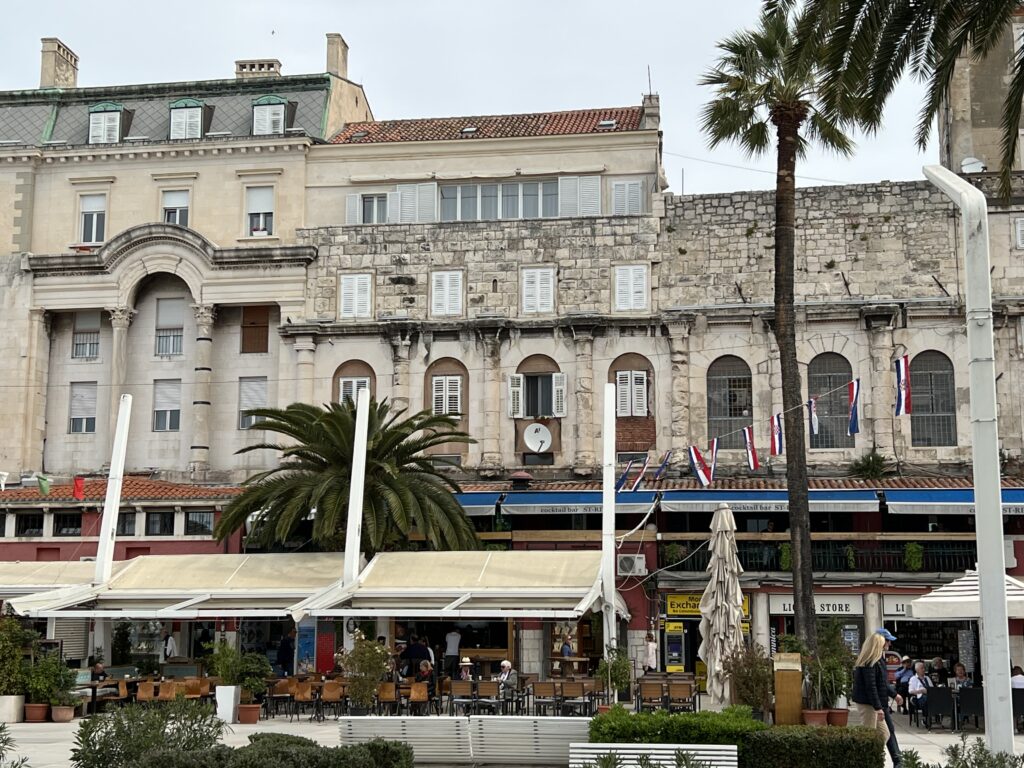
When it comes to accommodation in Split, there’s something for every type of traveler. Whether you’re looking for a luxury experience or something more budget-friendly, Split has a range of options.
Staying in the Old Town puts you right in the heart of the action, but it comes with a higher price tag. You’ll have the convenience of being able to walk everywhere, from Diocletian’s Palace to the Riva promenade.
For a more affordable stay, consider the modern parts of Split just outside the Old Town, where you can still enjoy easy access to the city’s main attractions without breaking the bank.
Top 4 Places to Stay in Split:
- Hotel Vestibul Palace & Villa – Set within the walls of Diocletian’s Palace, this hotel combines ancient history with luxury.
- Hotel Luxe – A stylish hotel near the Old Town, offering modern amenities and a short walk to the Riva.
- Heritage Hotel 19 – Located in the heart of the Old Town, perfect for those looking for a historical setting with luxury comforts.
- Radisson Blu Resort & Spa – A bit outside the city center but ideal for those seeking a beachfront location with resort-style amenities.
Tips for Staying in Split:
- Parking is limited in Split, so if you plan on renting a car, make sure your hotel offers parking.
- Book accommodations in advance during peak season to secure the best rates and locations.
- If you’re sensitive to noise, avoid staying too close to the Riva promenade, as it can get lively, especially at night.
- Consider staying outside the Old Town for a quieter and more affordable experience while still being within walking distance of attractions.
Tips for Visiting Split
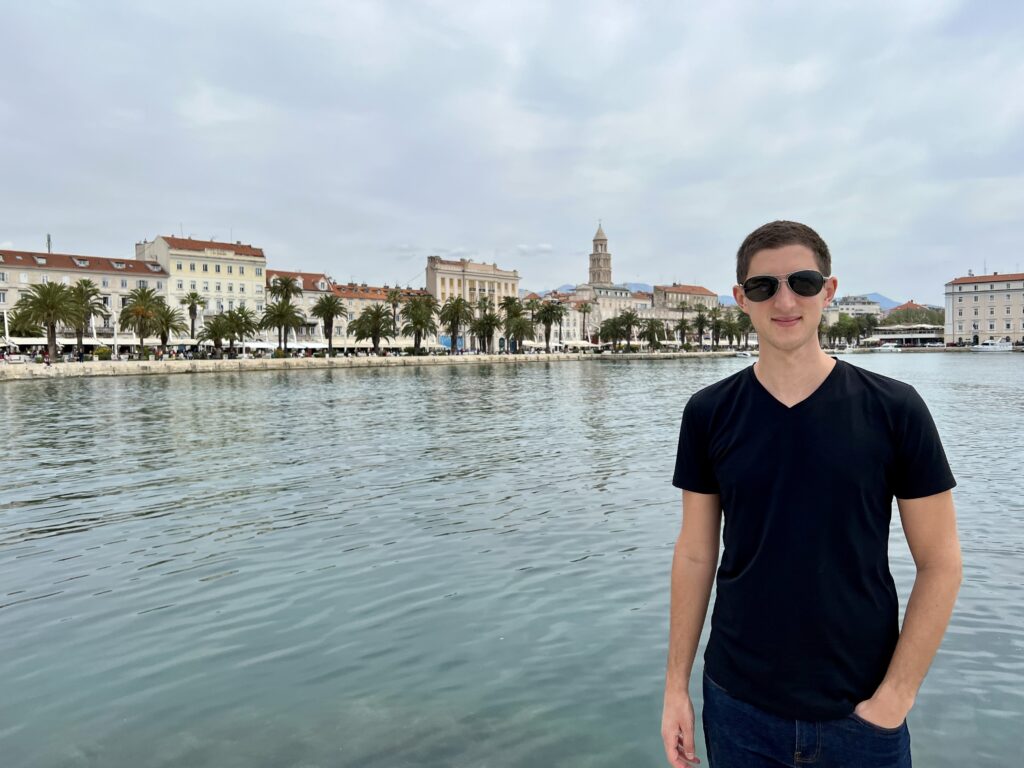
- Get Connected with Airalo e-SIMS: Save on roaming charges by using an Airalo e-SIM to stay connected throughout your trip. It’s an easy, affordable way to access mobile data without hunting for Wi-Fi.
- How Long to Visit: Plan to stay at least three to four days to fully explore Split and its major attractions. If you’re using Split as a base, consider staying longer to visit nearby areas like Trogir and the islands.
- Best Time of Year to Visit: The best time to visit Split is during the shoulder seasons—April to June or September to October—when the weather is pleasant and the crowds are smaller.
- Use Split as a Home Base: Split’s central location makes it an ideal home base for exploring more of Croatia. From here, you can easily reach destinations like Dubrovnik, Trogir, and Krka National Park.
- Use the Ferry System: Split is a major ferry hub, making it easy to visit nearby islands like Hvar, Brač, and Vis. Be sure to check ferry schedules ahead of time, especially during peak tourist season.
- Explore by Foot: Split’s Old Town is best explored on foot. The narrow streets are perfect for wandering, and most major sights are within walking distance.
- Stay Hydrated: The Mediterranean sun can be intense, so make sure to carry water with you, especially if you’re climbing the bell tower or hiking up Marjan Hill.
- Currency: As of 2023 Croatia now uses the Euro, so be sure to have some cash on hand for smaller purchases and local markets. Credit cards are widely accepted in tourist areas.
Getting Around in Split/Transport Options
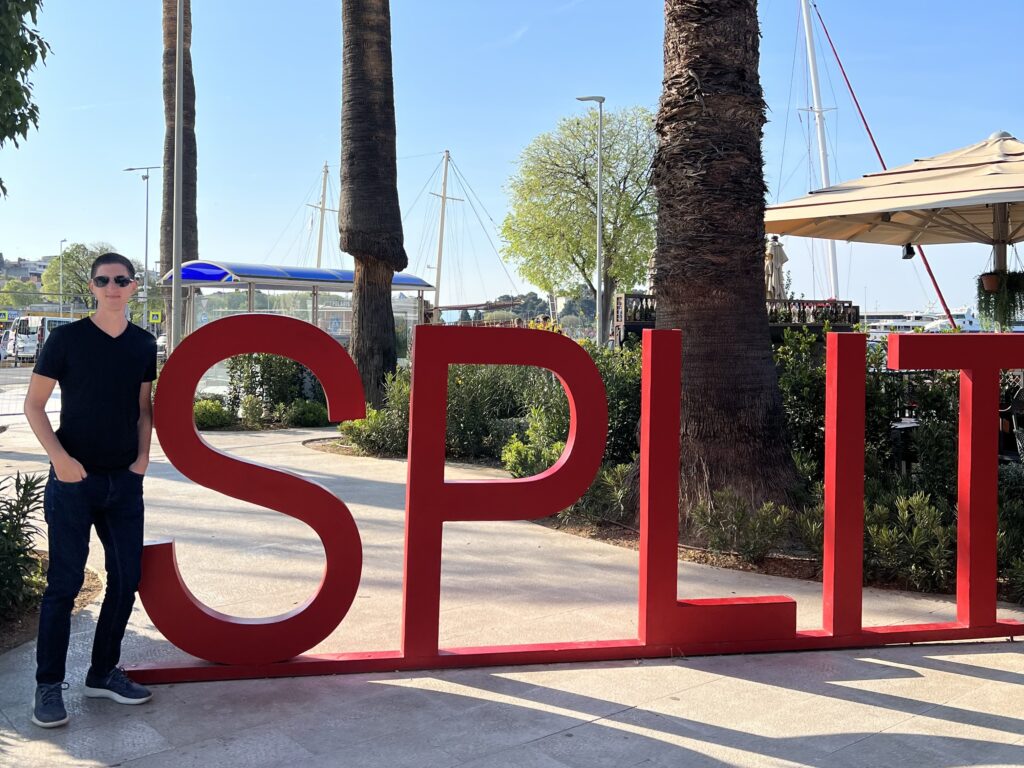
Getting around Split is fairly simple, as most of the major attractions are located within the Old Town and can easily be explored on foot. Wandering through the narrow streets of the historic center is one of the best ways to soak up the atmosphere. However, if you plan to venture beyond the Old Town or explore more of the surrounding region, there are several transport options available.
Transport Options in Split:
- Rent a Car: Ideal for exploring areas outside of Split, such as Klis Fortress or Krka National Park. Just be aware that parking in the city can be limited.
- Use the Ferry System: Split is a major hub for ferries to nearby islands like Hvar, Brač, and Vis. It’s a convenient and scenic way to visit the islands.
- Group Tours: Perfect for travelers who prefer guided experiences, offering easy access to popular destinations without worrying about logistics.
- Private Organized Tour: For a more personalized experience, consider booking a private tour to explore Split or nearby attractions with a local guide at your own pace.
Conclusion
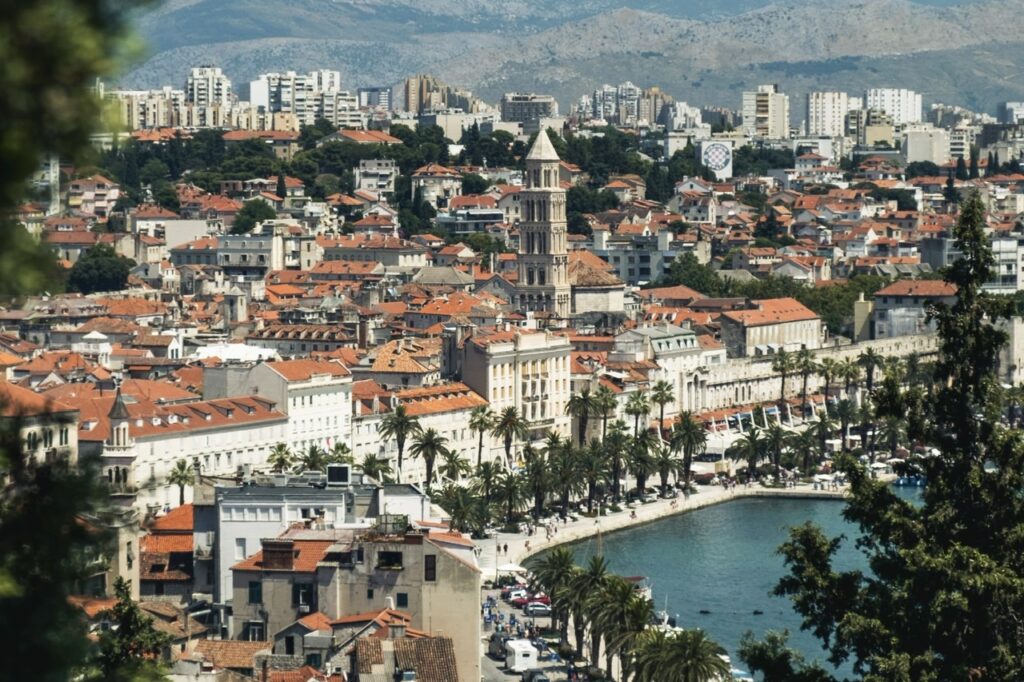
Split is full of amazing reasons to visit. From the rich history and vibrant culture to beautiful accommodations, this city has something for everyone. Even though I only spent one day in Split, it was one of my favorite stops in Croatia.
History lovers will especially enjoy it, but even if you aren’t, Split’s Mediterranean charm will win you over. Don’t forget to explore beyond the usual tourist spots to discover the city’s modern side and local gems. Split is a city you won’t want to miss!
Pin this Post for Later!
